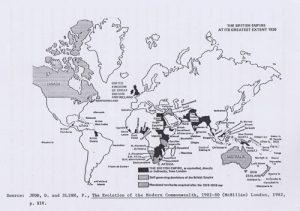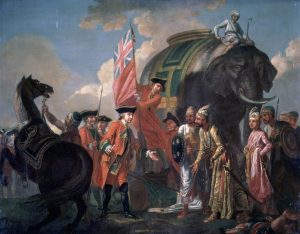American Anti-Colonialism, and the Liquidation of the British Empire.
This was so if the daily bread of its population was to remain without any interruption and the daily work to continue to be undertaken. Even as regards, later, the air force, “machines themselves could of course fly to their area of operations, but the men and the elaborate equipment on the ground, without which an air squadron could not operate, could move no faster than they could be transported by sea.”5 Thus, again it was the navy which played a significant role. As well as protecting British sea communications, it was the navy’s task to deny the use of sea communications to an enemy. A navy adequate to the first of those roles will be fully competent to fulfil the other.
There were two factors which determined naval strength. One was the volume and distribution of British trade which was to be protected. Seaborne supplies were liable to interruption at any point of the voyage from their origin to their destination. For example, “supplies of grain to the United Kingdom could be interrupted off the mouth of the River St. Lawrence, off Sandy Hook, or the River Plate, as well as in the English Channel. Merchant vessels bringing supplies were liable to capture or destruction by any armed ship of an enemy, whether a ship of war or a merchant ship converted for that purpose, at any point in their voyage.”6 Therefore it was the duty of the British navy to supply protection for the merchant ships bringing supplies in all seas traversed by the latter, to the degree required in different areas according to the particular enemy of the moment.
The second factor was the ability to counter-balance the naval force possessed by potential enemies. For example, if an enemy possessed cruisers capable of operating on the ocean trade routes, the British navy had to possess cruisers of at least similar strength to protect British sea-borne trade against them or if the enemy disposed of submarines, the British navy should have possessed sufficient anti-submarine craft. If the enemy was in a position to attack British sea-borne trade from the air, anti-aircraft defence had to be provided for it in the danger zone.
It continually had to be the aim of the United Kingdom government to keep the navy at a standard capable of defending the British sea communications combined with adequate force to deal with the forces possessed by potential enemies. This meant that, as ships were always being built in one or other foreign navy and as technological advancement occurred, a steady programme of replacement of old ships had to take place year by year.
The mobility of naval forces needed to be high. They might be called on to be redeployed from one point of the world to another. They could operate for months on end in any area as long as a base was available to them. Thus it was essential to set up a system of supply and replenishment in a new sphere of operations, in order to enable the naval force to continue working there. It can be said for sure, that cruising forces were required in all parts of the world in which there was an appreciable density of British sea-borne trade.



